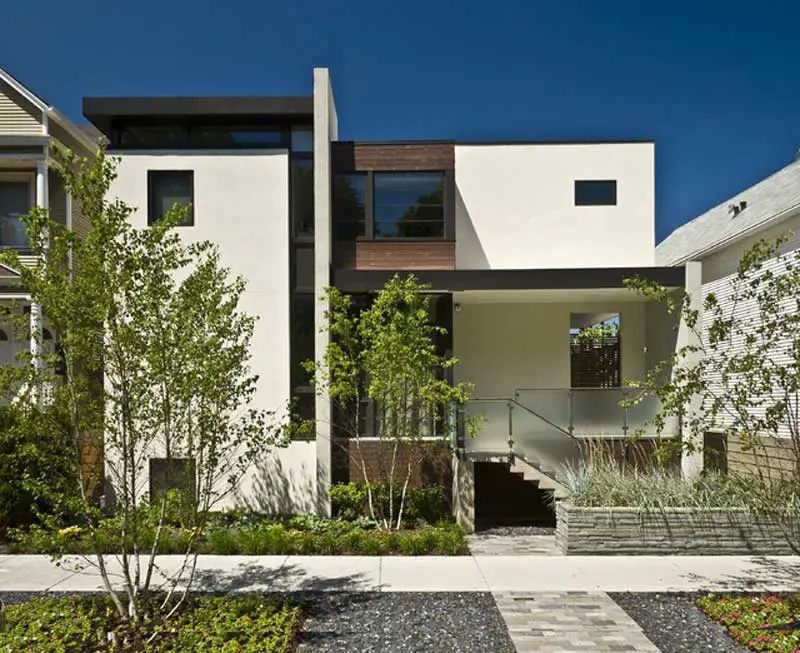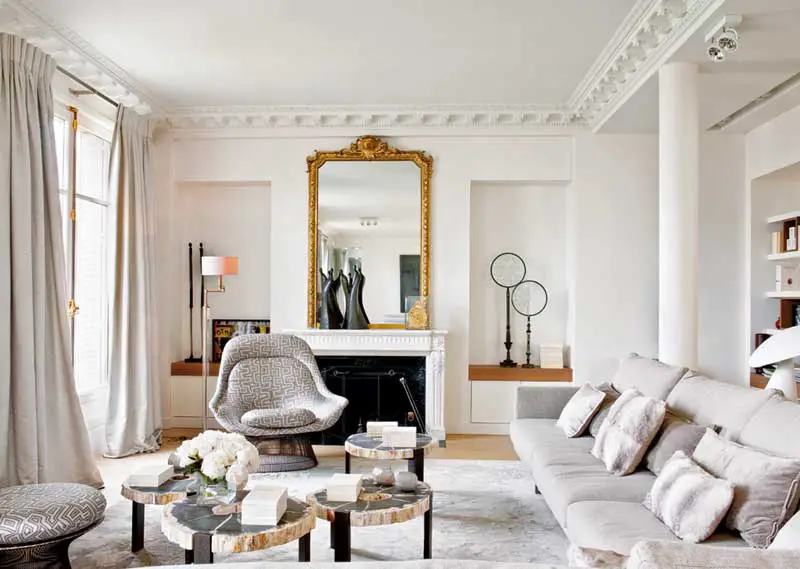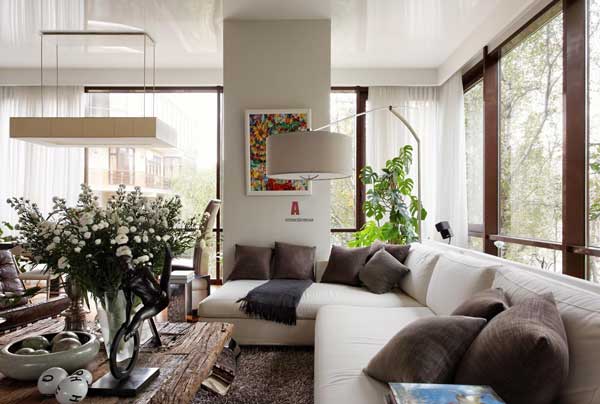If you are lucky enough to have a living room on the larger side, don’t let it overwhelm you — work with it! Clever lighting, added architectural features and a thoughtful furniture plan can make your living room a place that feels cozy instead of cavernous.
Follow these tips to create a living room where family and friends can stay and soak up the beautiful design.
Choose a warm color palette

Color is such a personal decision, and the process of getting it right can be extremely frustrating. If you are testing colors in your large living space, try a warm hue. Warmer tones advance, making a room feel intimate and cozy. Work with the colors of your furniture and rugs — these are the big-ticket items, and paint is cheap in comparison.
Tip: Paint your colors onto large boards and move them around the room. Leave them sitting next to skirting boards, near windows and on top of mantels. How do they look when the light changes, or next to greenery?
Create a quiet spot

If your living room is on the large side, arrange your furniture to allow for more than one activity. Seating clusters let some family members kick back and read while others sit and chat.
Tip: A large room can take oversize pieces of furniture. Two sofas and a mix of chairs work wonderfully. Daybeds, benches and chaises work well too, as long as they don’t mess with traffic flow.
Add interest to your ceiling

A large living room ceiling that has few or no architectural features can make any room feel never-ending. A decorative ceiling coffer like this one breaks up the monotony and draws the eye toward the more interesting objects in the room.

Tip: If your budget doesn’t stretch to an elaborate coffered ceiling, use a simpler strapping like the one in this living room. The variety of plaster and wood on the market today can help you achieve amazing results. You can also paint the strapping before it’s installed for a custom color treatment.
Add a workspace

If you have the space and funds to put in bookshelves and a desk area like this one, consider the pros and cons. A work area is terrific for keeping a watchful eye on your family’s Internet usage, but if this is your only room to relax in, you may want to pass.
Tip: Be mindful of sun glare on computer screens when designing a work area. Test the area with a computer and a table of similar height to the one you’re planning to have. You don’t want to be forced to shut the blinds or curtains, especially in a multitasking living room.

A much smaller upright desk, like the one shown here, is a less elaborate approach to the living room workspace. You can still keep an eye on children’s computer usage, and a desk like this has the bonus of letting you hide messy paperwork when guests arrive.
Tip: If the unit you purchase doesn’t come with an access hole for cabling (and it is not an antique), it is well worth getting your handyperson to drill a hole in the back corner of the desktop to keep electrical cords neat and tidy.
Use task lighting

Task lighting is an important element in a well-balanced, enjoyable large living room. Table lamps can change the mood of a room when used with recessed or hanging ceiling lights.
Tip: To work out the amount of sufficient lighting, multiple the length of the room by the width. Then multiply this figure by 1.5 — this is the total wattage needed to light the room.
For example: If a living room is 20 feet wide and 25 feet long, the total area is 500 square feet. If you multiply 500 by 1.5, you get 750, so the living room needs 750 watts of total light to function efficiently. Divide your final wattage among your ceiling, wall and task lighting. In large rooms four different types of lighting work best.
Use different rugs

Rugs are perfect for defining areas — a large living room may need a few zones to make it work efficiently. Taking a color from one rug and linking it to another, like in this room, will also help. Using bold colors in your rugs means you can keep the more expensive key pieces neutral. You can match color in your cushions and lamp shades.
Tip: If you have the room, lay your rugs opposite ways; this will instantly imply different uses within the room.



